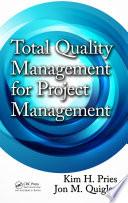Modern farming practices involve more stakeholders in the supply chain, presenting issues of storage, transportation, and distribution prior to reaching the consumer. This increasing complexity in food production chains creates more points for introducing microorganism contamination of crops, livestock, and aquatic organisms. Managing Food Safety Risks in the Agri-Food Industries addresses existing and emerging risks in the primary agri-food sectors and discusses ways to manage, reduce, or prevent these risks from occurring. Following a short introduction, the authors examine the advantages and disadvantages of various food chain risk assessment tools. The book covers three primary production sectors—crops, terrestrial livestock, and aquaculture products—along with a chapter on game and wild fish catch. Under each sector, the book addresses the existing and emerging food safety risks, challenges, and intervention strategies. Each chapter focuses on microbiological and natural or man-made chemical hazards that occur at the farm level with potential to cross-contaminate or bioaccumulate. The book addresses horticulture crops and microbiological contaminants, food safety hazards and prevention strategies in beef, and milkborne outbreaks. It discusses Campylobacter and Salmonella risk in the broiler industry, and the prevalence of Salmonella in pig meat, risk factors, and intervention approaches. The book also covers potential parasites and diseases from game and exotic meat and microbiological and environmental contaminants in captured fish as well as in farmed fish and shellfish. The authors conclude with an exploration of how consumers and agri-food stakeholders perceive risk and the best means for communicating risk to the public.
Safety. Risks. in. the. Beef. and. Dairy. Industries. 4.1 Managing Food Safety
Risks in the Beef Industry 4.1.1 Introduction The major causes of concern and
product recalls associated with fresh meat products are typically linked to
Escherichia ...










